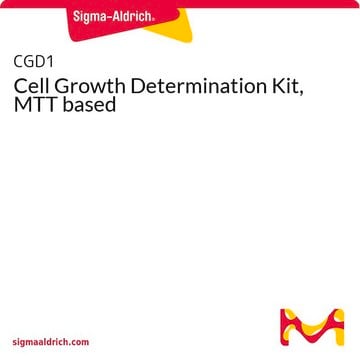1.00326
Hydrogen chloride solution
c(HCl) = 0.1 mol/l (0.1 N) in 2-propanol, DIN ISO 6618, for titration in non-aquous media, Titriplex®
Synonyme(s) :
Hydrogen chloride solution
About This Item
Produits recommandés
product name
Hydrogen chloride solution, 0.1M in 2-propanol, acc. to DIN ISO 6618 part 1 c(HCl) = 0.1 mol/l (0,1 N), Titripur®
Niveau de qualité
Gamme de produits
Titripur®
Forme
liquid
Température d'inflammation spontanée
425 °C (2-Propanol)
Qualité
Analyzed in our ISO 17025 accredited QC lab
Limite d'explosivité
2-13.4 % (v/v) 2-Propanol)
Capacité de réaction
reaction type: Acid-base reactions
Concentration
0.1 M
Technique(s)
titration: suitable
pH
<0.5 (20 °C in H2O)
Température de transition
flash point 12 °C (2-Propanol)
Densité
0.79 g/cm3 at 20 °C
Température de stockage
15-25°C
Catégories apparentées
Application
- A highly selective electrochemical sensor for chloramphenicol based on three-dimensional reduced graphene oxide architectures.: This study presents the development of an electrochemical sensor for detecting chloramphenicol in aqueous solutions, leveraging the properties of reduced graphene oxide. Hydrogen chloride solution plays a critical role in the preparation of the graphene oxide, which is instrumental for the sensor′s high sensitivity and selectivity (Zhang et al., 2016).
- Effects of cross-linking molecular weights in a hyaluronic acid-poly(ethylene oxide) hydrogel network on its properties.: This research explores the impact of cross-linking with varying molecular weights on the properties of a hyaluronic acid-polyethylene oxide hydrogel. The use of hydrogen chloride solution in modifying the hydrogel structure is essential for optimizing its physical characteristics for potential analytical chemistry applications (Noh et al., 2006).
- [Determination of docosahexenoic acid in human serum by capillary gas chromatography].: This paper discusses a method for the determination of docosahexenoic acid in human serum using capillary gas chromatography, where hydrogen chloride solution is used during the esterification process of fatty acids, demonstrating its utility in enhancing the precision of analytical techniques (Li et al., 1997, article in Chinese).
Caractéristiques et avantages
This volumetric solution is analyzed by our calibration laboratory D-K-15185-01-00 which is accredited according to DIN EN ISO/IEC 17025 for analysis of amount-of-substance concentrations in volumetric solutions by DAkkS (Deutsche Akkreditierungsstelle - German National Accreditation Body). The accreditation certificate can be found at www.sigmaaldrich.com/ISO17025.
Conditionnement
Remarque sur l'analyse
Amount-of-substance concentration 0.0994 - 1.006 mol/L
Measurement uncertainty ± 0.0004 mol/L
Traceability NIST SRM
The concentration is determined by volumetric titration and refers to 20°C.
The amount-of-substance concentration of this volumetric solution is determined with standardized sodium hydroxide solution (article number 1.09141). The sodium hydroxide solution is standardized by hydrogen chloride solution (article number 1.09060) which has been standardized against volumetric standard Tris(hydroxymethyl)aminomethane (article number 1.02408).
This volumetric solution is traceable to a primary standard reference material (SRM) from the National Institute of Standards and Technology, Gaithersburg, USA (NIST SRM 723 Tris(hydroxymethyl)aminomethane) by means of volumetric standard Tris(hydroxymethyl)aminomethane (article number 1.02408), certified reference material according to ISO 17034, analyzed by our accredited calibration laboratory of Merck KGaA, Darmstadt, Germany according to DIN EN ISO/IEC 17025. The uncertainty is expressed as expanded measurement uncertainty with a coverage factor k=2 covering a confidence level of 95%.
Note: The titer is a correction factor to correct for variations of the volumetric solution, the titration equipment, the temperature and other laboratory conditions. For correct titration results it is recommended to determine a titer with the laboratory specific equipment and under laboratory specific conditions directly after opening a new bottle and at regular time intervals.
Informations légales
Produit(s) apparenté(s)
Mention d'avertissement
Danger
Mentions de danger
Conseils de prudence
Classification des risques
Eye Irrit. 2 - Flam. Liq. 2 - Met. Corr. 1 - STOT SE 3
Organes cibles
Central nervous system
Code de la classe de stockage
3 - Flammable liquids
Classe de danger pour l'eau (WGK)
WGK 1
Point d'éclair (°F)
53.6 °F - (2-Propanol)
Point d'éclair (°C)
12 °C - (2-Propanol)
Certificats d'analyse (COA)
Recherchez un Certificats d'analyse (COA) en saisissant le numéro de lot du produit. Les numéros de lot figurent sur l'étiquette du produit après les mots "Lot" ou "Batch".
Déjà en possession de ce produit ?
Retrouvez la documentation relative aux produits que vous avez récemment achetés dans la Bibliothèque de documents.
Les clients ont également consulté
Articles
SmartChemicals enable wireless CoA data transfer, reducing human error in titration experiments.
Notre équipe de scientifiques dispose d'une expérience dans tous les secteurs de la recherche, notamment en sciences de la vie, science des matériaux, synthèse chimique, chromatographie, analyse et dans de nombreux autres domaines..
Contacter notre Service technique






